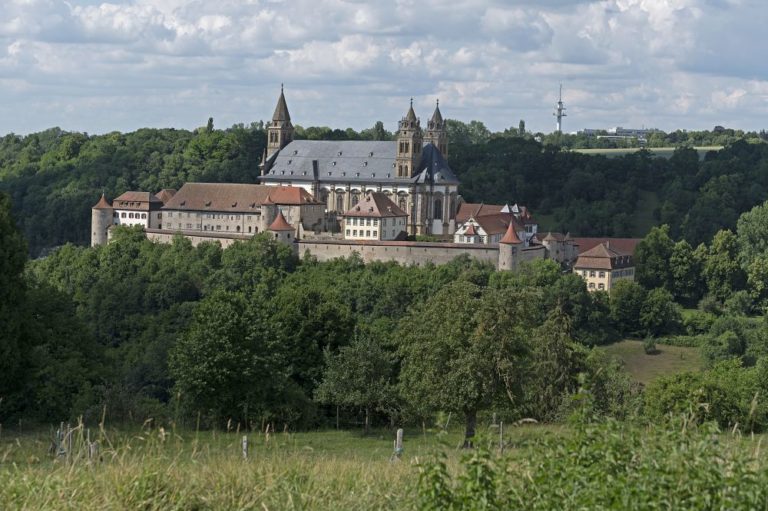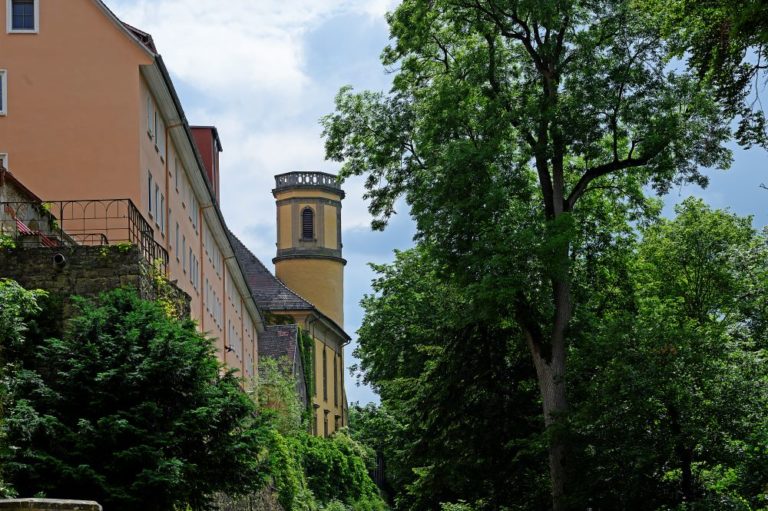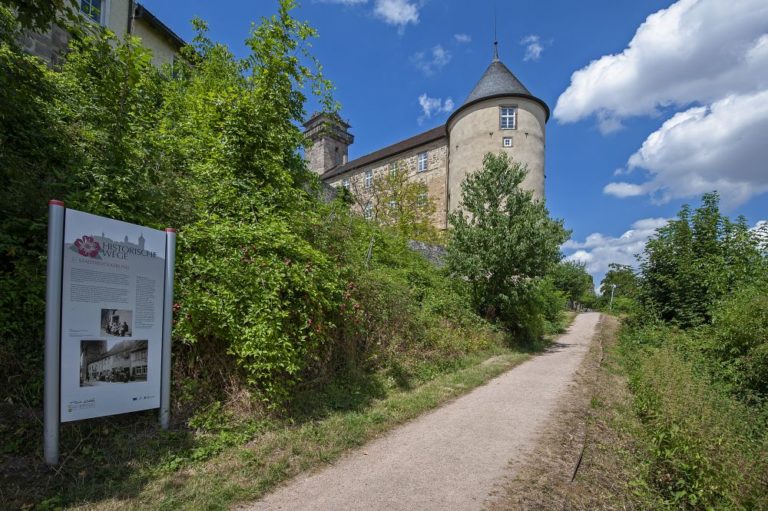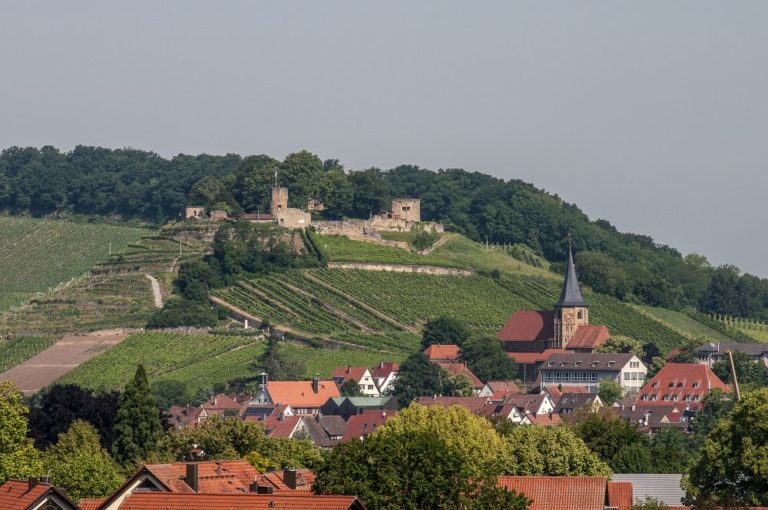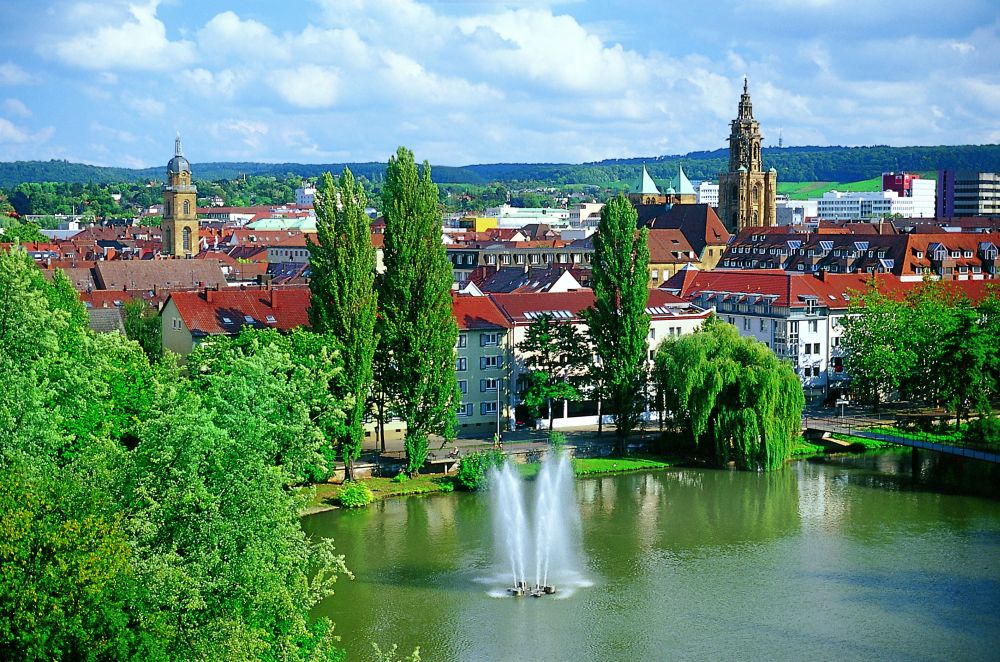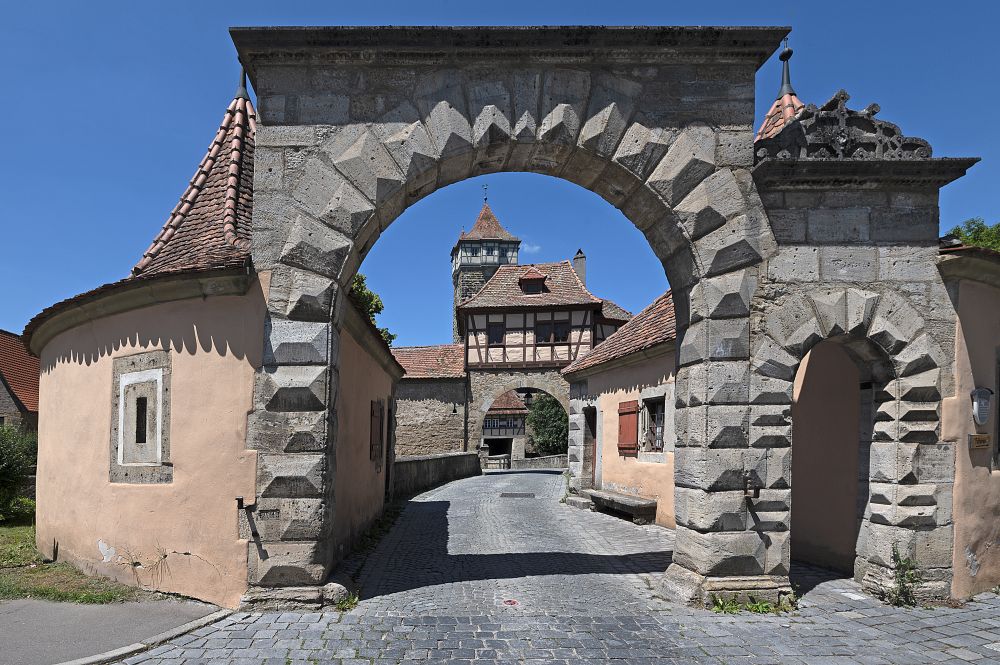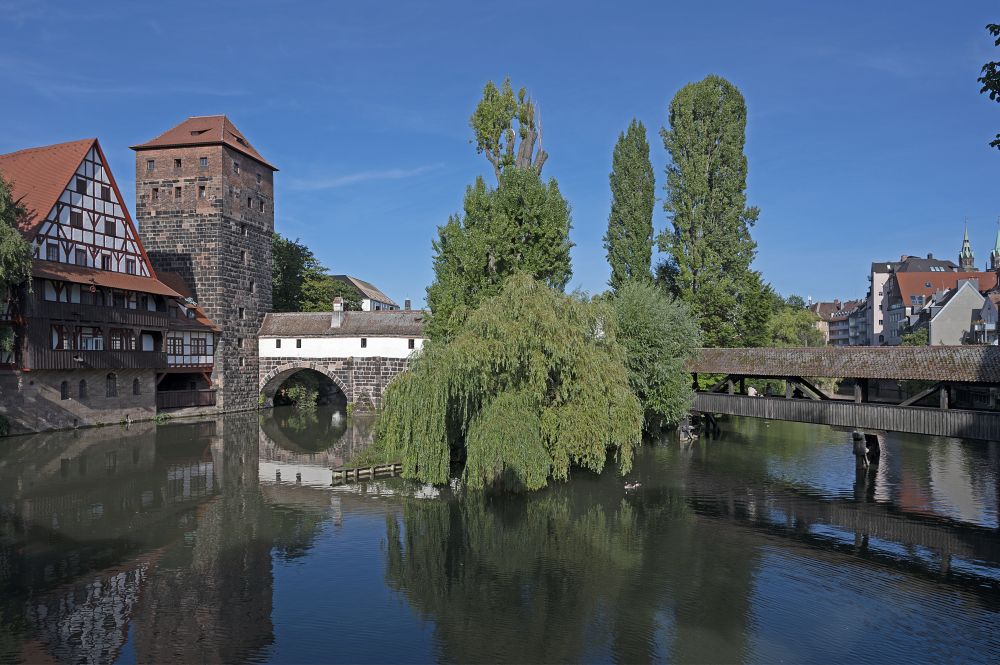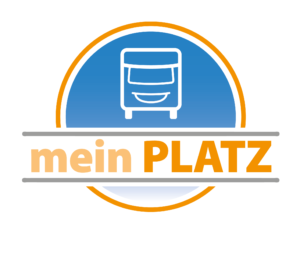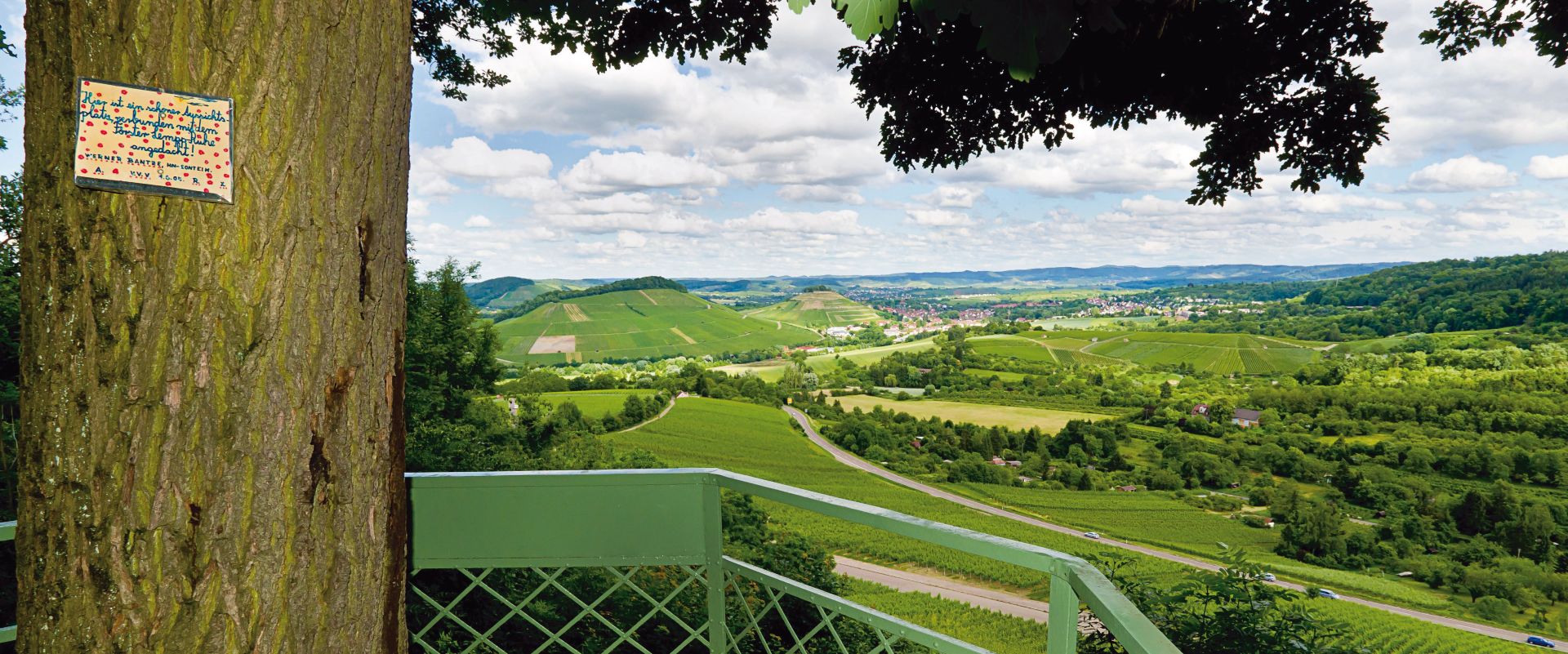
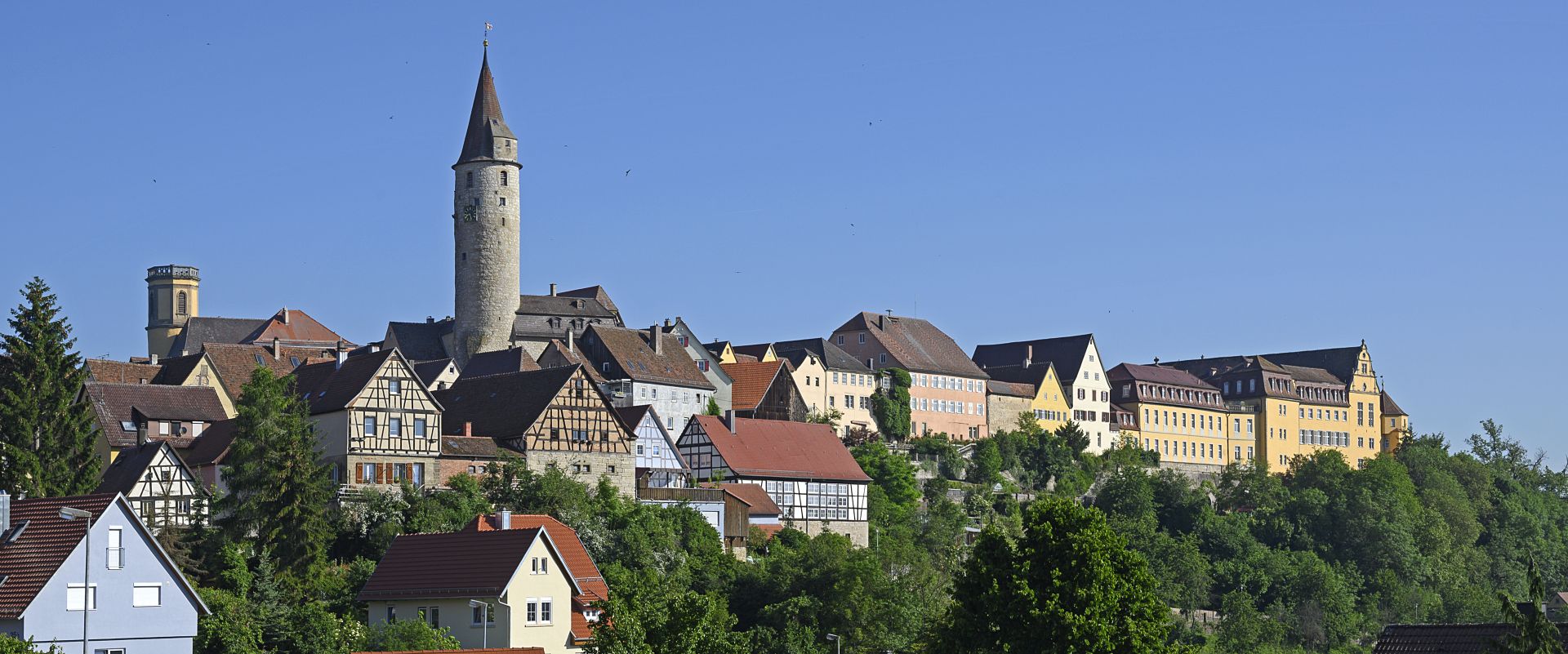
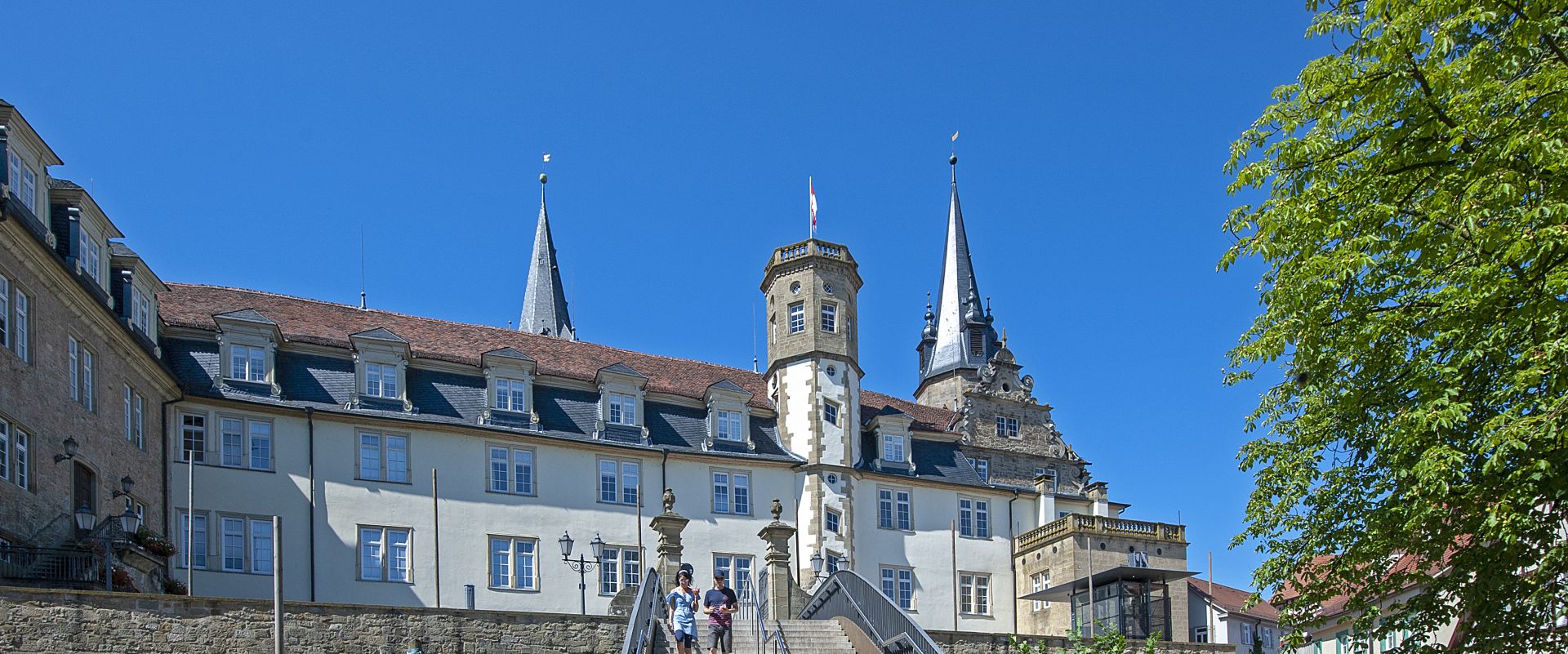
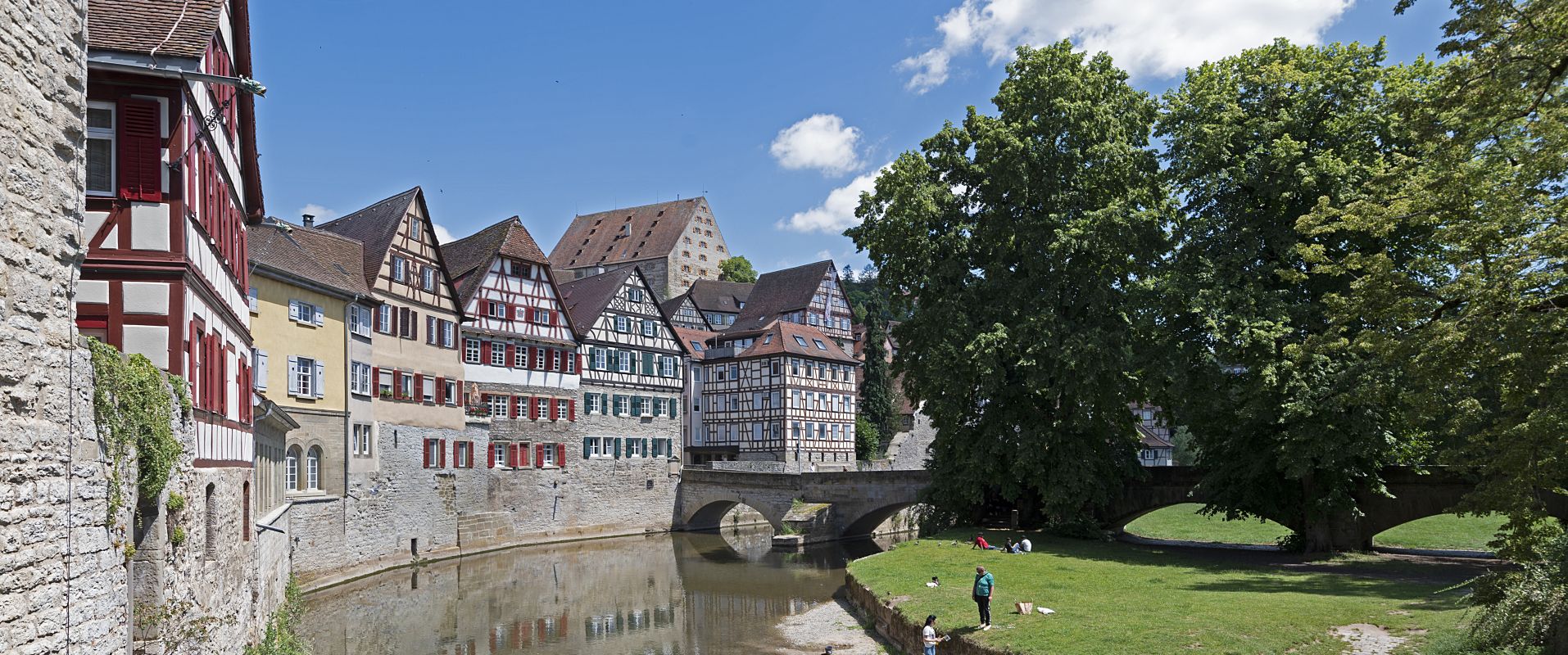

Startseite > Routen > Castle Road – Tour 2
On the road between Heilbronn and Rothenburg o.d. Tauber
This is what awaits you on this route:
- Wine landscapes
- River valleys
- beautiful views
Look forward to:
At the beginning of this tour is Heilbronn. Nestled in extensive vineyards, the city has made a name for itself as Germany’s largest red wine growing region. The heart of the city beats along the Old Neckar River, where the Neckar Mile is a popular meeting place for guests from near and far.
In Heilbronn, the Castle Road leaves the Neckar Valley and takes the road to Hohenlohe via Weinsberg. It meanders through wine landscapes again and again. The best places to stop are the “Besenwirtschaften”, where home-produced wines and homemade food are served.
On the way to Weinsberg, a wonderful view of the wine landscape with its cone mountains opens up. One of them is dominated by the ruins of Weibertreu Castle, which was given its name by the historical event about the “Faithful Women of Weinsberg”. In the complex with a magnificent panoramic view, it is worth taking a look at the “Stone Album”, in which the names of prominent visitors are engraved, from the poets of the Romantic period to Queen Olga of Württemberg. On the way to the castle, the Kernerhaus is worth a visit, the place where the doctor and poet Justinus Kerner worked.
In Hohenlohe, the Castle Road leads to Öhringen, Waldenburg, Schwäbisch Hall and Kirchberg an der Jagst. In Öhringen, the magnificent Renaissance castle with its extensive 300-year-old courtyard garden is located in the middle of the old town and, together with the collegiate church, forms an impressive ensemble. Visible from afar, Waldenburg offers a box seat at an altitude of over 500 meters with a view of the vast Hohenlohe plain. A panoramic path around the old town leads to idyllic cottage gardens, a medieval bastion, the castle and, last but not least, to cafés and restaurants.
The next stop is Schwäbisch Hall with the Großcomburg. The former Benedictine monastery offers wonderful views of the old salt-boiling town on the Kocher from its walkable battlements. It impresses with a unique ensemble of half-timbered houses, covered wooden bridges, narrow alleys and one of the most beautiful marketplaces in southern Germany. The Kunsthalle Würth, the Johanniterkirche, the Neue Globe and the open-air plays – always from June to August – are popular places to visit for those interested in culture.
From Schwäbisch Hall, the Castle Road leads to Kirchberg an der Jagst. The former residential town lies picturesquely above the Jagst valley. The upper town inside the city walls is called the “Städtle”. Its image is dominated by the town tower, which towers over the scenery like an oversized pencil, by the town church and by the largest castle complex in Hohenlohe. Among other things, it houses the Biohotel Schloss Kirchberg. Committed to the Slow Food idea, the café serves the whole variety of regional organic delicacies.
Finally, Rothenburg ob der Tauber, the “Franconian Jerusalem”, is the destination of the second tour.
Look forward to:
At the beginning of this tour is Heilbronn. Nestled in extensive vineyards, the city has made a name for itself as Germany's largest red wine growing region. The heart of the city beats along the Old Neckar River, where the Neckar Mile is a popular meeting place for guests from near and far.
In Heilbronn, the Castle Road leaves the Neckar Valley and takes the road to Hohenlohe via Weinsberg. It meanders through wine landscapes again and again. The best places to stop are the "Besenwirtschaften", where home-produced wines and homemade food are served.
On the way to Weinsberg, a wonderful view of the wine landscape with its cone mountains opens up. One of them is dominated by the ruins of Weibertreu Castle, which was given its name by the historical event about the "Faithful Women of Weinsberg". In the complex with a magnificent panoramic view, it is worth taking a look at the "Stone Album", in which the names of prominent visitors are engraved, from the poets of the Romantic period to Queen Olga of Württemberg. On the way to the castle, the Kernerhaus is worth a visit, the place where the doctor and poet Justinus Kerner worked.
In Hohenlohe, the Castle Road leads to Öhringen, Waldenburg, Schwäbisch Hall and Kirchberg an der Jagst. In Öhringen, the magnificent Renaissance castle with its extensive 300-year-old courtyard garden is located in the middle of the old town and, together with the collegiate church, forms an impressive ensemble. Visible from afar, Waldenburg offers a box seat at an altitude of over 500 meters with a view of the vast Hohenlohe plain. A panoramic path around the old town leads to idyllic cottage gardens, a medieval bastion, the castle and, last but not least, to cafés and restaurants.
The next stop is Schwäbisch Hall with the Großcomburg. The former Benedictine monastery offers wonderful views of the old salt-boiling town on the Kocher from its walkable battlements. It impresses with a unique ensemble of half-timbered houses, covered wooden bridges, narrow alleys and one of the most beautiful marketplaces in southern Germany. The Kunsthalle Würth, the Johanniterkirche, the Neue Globe and the open-air plays - always from June to August - are popular places to visit for those interested in culture.
From Schwäbisch Hall, the Castle Road leads to Kirchberg an der Jagst. The former residential town lies picturesquely above the Jagst valley. The upper town inside the city walls is called the "Städtle". Its image is dominated by the town tower, which towers over the scenery like an oversized pencil, by the town church and by the largest castle complex in Hohenlohe. Among other things, it houses the Biohotel Schloss Kirchberg. Committed to the Slow Food idea, the café serves the whole variety of regional organic delicacies.
Finally, Rothenburg ob der Tauber, the "Franconian Jerusalem", is the destination of the second tour.
Places
Along the Burgenstraße there are RV parks of various equipment – from simple pitches to RV parks. The location also varies. Places directly at the river can be found as well as places in the old town or at the spa park.
RV park in front of the wine treasure cellar of the cooperative winery Heilbronn | RV park “Wertwiesenpark” Heilbronn | RV park Weinsberg | RV park HEICamp Öhringen | RV park Auwiese Schwäbisch Hall | RV park Kirchberg an der Jagst | RV parks P2 and P3 in Rothenburg ob der Tauber | Parking Rothenburg
Worth seeing
On Tour 2 along the Castle Road, numerous castles and palaces as well as other sights line the route. We briefly introduce some of them here:
Biking
The “Castle Road” cycle path accompanies the vacation route along its entire length from Mannheim to Bayreuth.
This stage of the “Castle Road” cycle route leads through the wine country of the Weinsberg Valley, from Öhringen to Schwäbisch Hall through rural Hohenlohe and through the countryside around the Kocher and Jagst rivers to Rothenburg ob der Tauber, the first Bavarian destination on the Castle Road.
The trail runs on paved farm roads, side roads and developed bike paths. Short stretches are to be covered on busy roads. Strong climbs await, especially before Waldenburg and when leaving the Kochertal.
Picture gallery
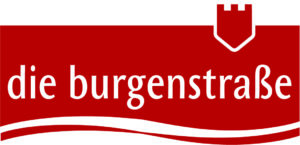
Starting point | Destination:
LENGTH:
Contact details
Due Burgenstraße e.V.
Allee 12
74072 Heilbronn
Tel.: +49 (0) 7131 9735010
Geographical features
In Hohenlohe, the Castle Road leads to Öhringen, Waldenburg, Schwäbisch Hall and Kirchberg an der Jagst. In Öhringen, the magnificent Renaissance castle with its extensive 300-year-old courtyard garden is located in the middle of the old town and, together with the collegiate church, forms an impressive ensemble. Visible from afar, Waldenburg offers a box seat at an altitude of over 500 meters with a view of the vast Hohenlohe plain. A panoramic path around the old town leads to idyllic cottage gardens, a medieval bastion, the castle and, last but not least, to cafés and restaurants.
The next stop is Schwäbisch Hall with the Großcomburg. The former Benedictine monastery offers wonderful views of the old salt-boiling town on the Kocher from its walkable battlements. It impresses with a unique ensemble of half-timbered houses, covered wooden bridges, narrow alleys and one of the most beautiful marketplaces in southern Germany. The Kunsthalle Würth, the Johanniterkirche, the Neue Globe and the open-air plays - always from June to August - are popular places to visit for those interested in culture.
From Schwäbisch Hall, the Castle Road leads to Kirchberg an der Jagst. The former residential town lies picturesquely above the Jagst valley. The upper town inside the city walls is called the "Städtle". Its image is dominated by the town tower, which towers over the scenery like an oversized pencil, by the town church and by the largest castle complex in Hohenlohe. Among other things, it houses the Biohotel Schloss Kirchberg. Committed to the Slow Food idea, the café serves the whole variety of regional organic delicacies.
Finally, Rothenburg ob der Tauber, the "Franconian Jerusalem", is the destination of the second tour.


